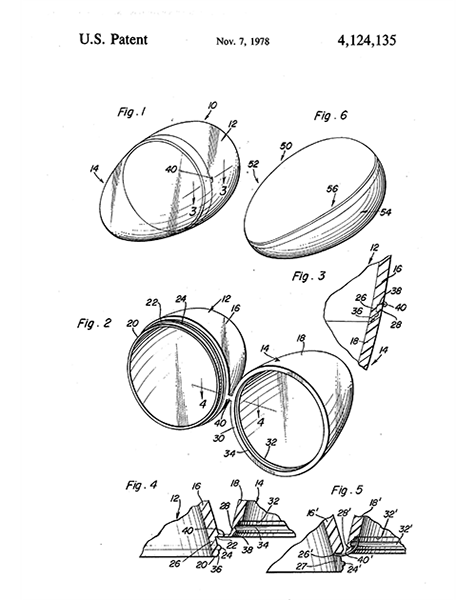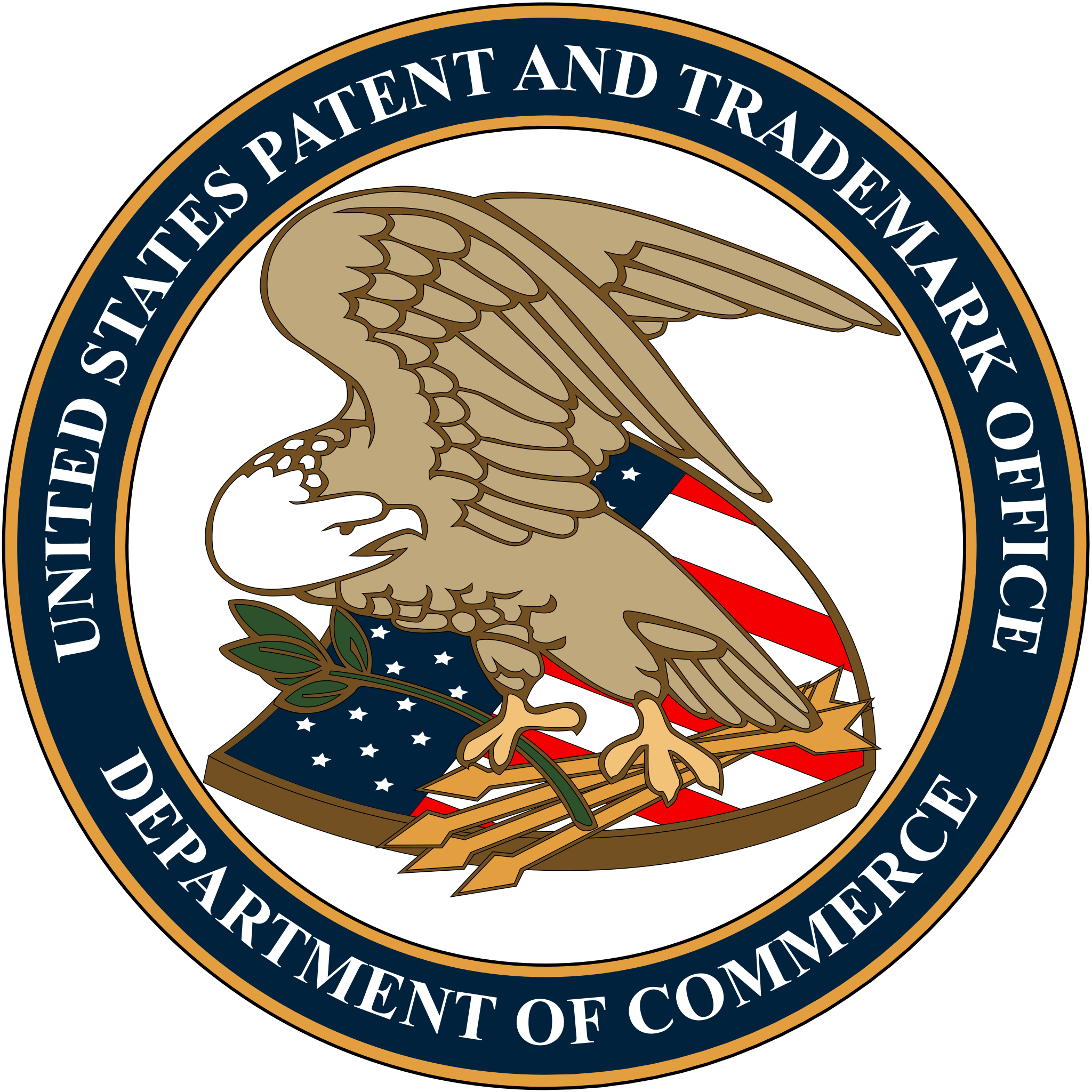Supreme Court Decision: Jack Daniel’s Properties, Inc. v. VIP Products LLC.
Supreme Court Decision: Jack Daniel’s Properties, Inc. v. VIP Products LLC.
On March 22, 2023, the Supreme Court heard oral arguments to determine how First Amendment trademark principles should apply to a dog toy produced by VIP Products.
The Bad Spaniels dog toy, which closely resembles a Jack Daniel’s whiskey bottle in size, shape, and font, has resulted in a trademark infringement lawsuit against VIP Products by Jack Daniel’s. VIP Products has countered that the toy is an expression protected by the First Amendment.
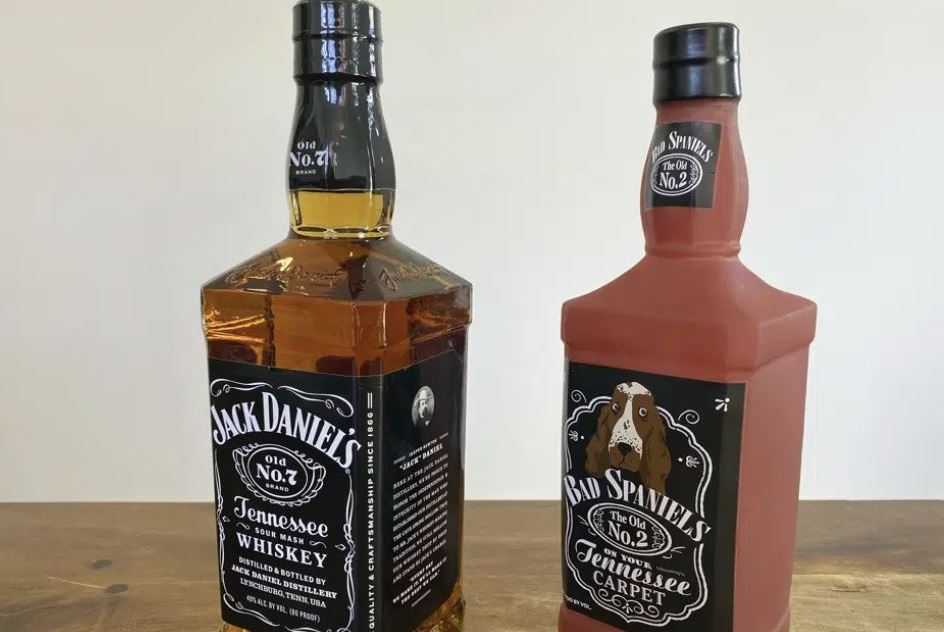
Photo from the New York Times
The U.S. Court of Appeals for the Ninth Circuit previously ruled that the toy was an “expressive work” under the Rogers test. Under the Rogers test, a finding of trademark infringement is prevented if the use is artistically relevant to the underlying work and does not explicitly mislead consumers as to the source or content of the work.
The Supreme Court now faces the task of deciding whether the humorous use of another’s trademark as one’s own on a commercial product is subject to the likelihood-of-confusion analysis under the Lanham Act or entitled to heightened First Amendment protection.
During oral arguments, most Justices appeared sympathetic to Jack Daniel’s. Jack Daniel’s argued that the Ninth Circuit decision was egregiously wrong, and that humor should not transform the Lanham Act into a trademark fee-for-all. Jack Daniel’s is currently receiving support from companies such as Nike, Patagonia, and the Biden Administration.
VIP Products, on the other hand, claims that the toy in question is essential to parody and that they had to borrow enough from the iconic Jack Daniel’s bottle to make the parody work. Justice Alito appeared unpersuaded that Jack Daniel’s faced any real-world risk of confusion. Pet owners who purchase these toys are not likely to mistake the source of the goods.
In summary, the Supreme Court must determine whether the Bad Spaniels dog toy is protected by the First Amendment or constitutes trademark infringement. The outcome of this case could have significant implications for the intersection of free speech and intellectual property law.
Stay tuned to find out how the Court rules.
Link to oral arguments: https://www.supremecourt.gov/oral_arguments/audio/2022/22-148
Suiter Swantz IP is a full-service intellectual property law firm providing client-centric patent, trademark, and copyright services. If you need assistance with an intellectual property matter and would like to speak with one of our attorneys, please contact us at info@suiter.com.
The History of World IP Day
The History of World IP Day.
World Intellectual Property Day is an annual celebration that takes place on April 26th. The holiday is meant to raise awareness about the importance of intellectual property rights and the role they play in fostering innovation and creativity around the world.
Why April 26th?
April 26th was chosen as the date for World Intellectual Property Day because it marks the anniversary of the establishment of the World Intellectual Property Organization (WIPO) in 1970. WIPO is a specialized agency of the United Nations that is responsible for promoting and protecting intellectual property rights around the world.
![]() Celebrations for the Holiday
Celebrations for the Holiday
Every year, World Intellectual Property Day is celebrated in different ways around the world. Here are some examples of how the holiday is observed:
- Conferences and Seminars: Many organizations hold conferences and seminars on April 26th to raise awareness about intellectual property and its importance. These events are often attended by industry experts, policymakers, and academics who share their knowledge and experiences with others.
- Competitions and Awards: Some organizations use World Intellectual Property Day to recognize and reward individuals or companies that have made significant contributions to the field. These awards can take the form of cash prizes, certificates, or other forms of recognition.
- Public Outreach: Many organizations use World Intellectual Property Day to reach out to the general public and raise awareness about the importance of intellectual property. This can include things like social media campaigns, public lectures, or workshops.
- Cultural Events: Some countries celebrate World Intellectual Property Day by hosting cultural events that highlight the importance of intellectual property in the arts and creative industries. This can include things like art exhibitions, film screenings, or music concerts.
World Intellectual Property Day is an important holiday and there are many ways to celebrate and help spread the word about IP!
Suiter Swantz IP is a full-service intellectual property law firm providing client-centric patent, trademark, and copyright services. If you need assistance with an intellectual property matter and would like to speak with one of our attorneys, please contact us at info@suiter.com.
Patent Marking: When Do Infringement Damages Begin to Accrue?
Ian Sannes is a patent attorney at Suiter Swantz IP. Ian graduated with honors from North Dakota State University, receiving his B.S. in Mechanical Engineering, and received his Juris Doctor from the University of Minnesota Law School.

Patent Marking: When Do Infringement Damages Begin to Accrue?
Patent owners who sell physical products must understand the significance of patent marking in determining the date from which they can claim patent damages. For patented products (as opposed to methods), if a product lacks proper marking, the damages calculation begins on the date the infringer receives notification of potential infringement, rather than the date of infringement.
This can significantly decrease damages awarded and the leverage that patent owners have during settlement negotiations. In some cases, an infringer might operate for years before receiving notice and could quickly withdraw their product from the market, owing little or no patent damages. Therefore, proper patent marking is crucial for maximizing a patent portfolio's value.
General Rule
The general rule for obtaining patent damages states that one can seek damages from the infringement date, up to six years prior. See 35 U.S.C § 287(a). This rule allows for complete recovery, subject only to the statute of limitations. However, this full recovery benefit may not apply in certain circumstances.
When a patent owner sells a product with proper patent marking, they can claim full recovery for damages from the infringement date. However, releasing a product without proper patent marking forfeits the full recovery benefit when 35 U.S.C § 287 comes into effect. Patent marking provides "constructive notice" to the public, and if a product released into the market lacks proper patent marking, then "actual notice" (such as a cease-and-desist letter or a lawsuit) must be provided to initiate the liability period.
To whom does the patent marking statute, 35 U.S.C § 287 apply?
There are specific situations in which 35 U.S.C § 287 would not apply, and a patent owner could still claim full recovery for damages. For instance, if the patent owner does not make or license a product, such as with an "idle patent" where there is nothing to mark, and therefore no risk of 35 U.S.C § 287 applying. Additionally, if the patent is not direct to a "patented article," such as with method claims or product-by-process claims that protect a product with a process, full recovery benefits would still be available.
To ensure the right to pursue full recovery, even for diligent patent marking owners, it may be advisable to include at least one product-by-process claim for a product. This ensures that, even when a licensee fails to properly mark a product as promised, the patent owner retains the right to claim full recovery for damages.
However, nuances exist when an infringement suit involves both a product claim and a method claim.
Under current case law, courts analyze all claims (not just product claims) under 35 U.S.C § 287 when at least some of the claims asserted are product claims. See, e.g., Soverain Software L.L.C. v. Amazon.com, Inc., 383 F. Supp. 2d 904 (E.D. Tex. 2005). However, a patent owner is not required to file a suit on all infringed claims.
Moreover, if the patent owner only asserts the method claims when filing the suit, then 35 U.S.C § 287 cannot be applied. See, e.g., Crown Packaging Tech., Inc. v. Rexam Beverage Can Co., 559 F.3d 1308 (Fed. Cir. 2009). In another example, if a suit is filed for infringement based on method claims of Patent A and product claims of Patent B, then 35 U.S.C § 287 could be applied to Patent B, but not Patent A.
Proper Patent Marking
Under 35 U.S.C § 287(a), to properly mark patented products, one must affix the word "patent" or the abbreviation "pat." along with the patent number or an address of an internet posting. See 35 U.S.C § 287(a). The text must be legible without a magnifying glass. See, e.g., Trussell Mfg. Co. v. Wilson-Jones Co., 50 F.2d 1027, 1030 (2d Cir. 1931). If the product is too small or difficult to label, the text can appear on the product packaging.
The belief that marking a product with the phrase "Patent Pending" is necessary while a patent application is pending is a myth. Marking or advertising with the phrase "Patent Pending" does not establish the date when liability starts. This differs from provisional rights under 35 U.S.C § 154(d) for recovery before the patent grant, which generally may be granted against a substantially identical product once the infringer receives actual notice (e.g., a proper cease and desist letter) after the publication date of the pending application.
Other Considerations
Navigating patent law in the United States can be complex. For instance, under 35 U.S.C § 287, if a product is not correctly marked, an infringer might not be liable from the infringement date until they "receive" actual notice, regardless of whether they knew of their infringement before they started infringing. In contrast, in the United Kingdom, actual and constructive notice standards resemble those in the U.S., but an infringer may also face liability if they knew or should have known of their infringement.
In many countries, including the U.S., accused infringers may only face liability if they were negligent. However, because patents are publicly accessible, accused infringers are considered negligent by default. In Canada, knowledge or notice is not a requirement for infringement, but courts may reject recovery claims if they deem the infringement innocent.
Given the severe consequences of failing to properly mark patented products, remembering the importance of proper patent marking and method-based claim drafting strategies, both domestically and in many foreign countries, is crucial.
Suiter Swantz IP is a full-service intellectual property law firm providing client-centric patent, trademark, and copyright services. If you need assistance with an intellectual property matter and would like to speak with one of our attorneys, please contact us at info@suiter.com.
The U.S. Copyright Office Launches New Artificial Intelligence (AI) Initiative
The U.S. Copyright Office Launches New Artificial Intelligence (AI) Initiative.
The U.S. Copyright Office recently launched an initiative to address issues surrounding artificial intelligence (AI) and copyright. As AI gains more prominence in society, we need to answer questions about copyrightability and registration.
The Copyright Office has released guidance that aims to tackle these issues, requiring applicants to be transparent about any AI content included in their works and assisting with the correction of pending and registered claims that include AI content.
The Copyright Office will reject registration applications that credit AI as the author or co-author of a work since copyrights can only be granted to works resulting from human creativity. However, copyright protection may still be available for AI software that facilitates the creative process for humans.
Specific Cases Involving AI and Copyright Registration
In a recent case, AI pioneer Steven Thaler applied for copyright registration for a two-dimensional piece of artwork titled "A Recent Entrance to Paradise" and listed the author as DABUS, a generative AI image system. However, the Copyright Office declined to register the work, stating that DABUS does not meet the human authorship requirement necessary to support a copyright claim.

Copy of “A Recent Entrance to Paradise” from The Copyright Review Board
In another recent case, author Kristinia Kashtanova included AI-generated images in her book "Zarya of the Dawn," which were created using Midjourney, an AI software that generates images based on text input. Similar programs include ChatGPT and Google Cloud AI.
The Copyright Office deemed the individual images created by Midjourney as not registerable since Ms. Kashtanova was not considered the author for copyright purposes. However, the Copyright Office recognized the text of the work, as well as, the selection and arrangement of the images and text in the book, as copyrightable.

Images of “Zarya of the Dawn” novel from The Official Copyright Registration
Further Discussion
Finally, the Copyright Office has announced plans to conduct public listening sessions during the spring season, inviting artists, professional creatives, AI developers, researchers, and lawyers to participate actively. The sessions will be held in a roundtable format, providing participants with an opportunity to express their questions and concerns about the impact of AI on creative domains.
You can register to attend these events here: Spring 2023 AI Listening Sessions | U.S. Copyright Office
As an IP firm, we will continue to keep our audience informed on the latest updates in relation to patents, trademarks, and copyright cases that take place in the future.
More information on copyright updates here: https://www.copyright.gov/newsnet/2023/1004.html
Suiter Swantz IP is a full-service intellectual property law firm providing client-centric patent, trademark, and copyright services. If you need assistance with an intellectual property matter and would like to speak with one of our attorneys, please contact us at info@suiter.com.
Hopping into the World of Easter-Inspired Patents
Hopping into the World of Easter-Inspired Patents.
As Easter approaches, it's a time for family, festivities, and of course, the Easter Bunny! Although Easter is primarily a religious holiday, there's no denying that it has also inspired a wide range of innovative inventions. In this spirit, we're taking a look at some of the most famous Easter-related patents that have made their way through the patent system.
Famous Easter-Related Patents
Take a look at these interesting Easter patents, as you prepare to celebrate the holiday!
1. "Hinged Plastic Easter Egg": US Patent No. 4,124,135
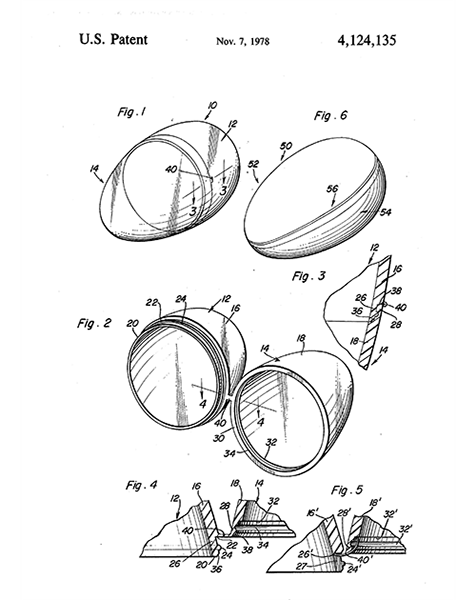
The hinged plastic easter egg was patented in 1978 by Erwin and Donald Weder. This revolutionary design proves to be helpful when it comes to keeping track of the other side of the egg!
2. A “Set of toy bunny Easter egg ears”: US Patent D703,277
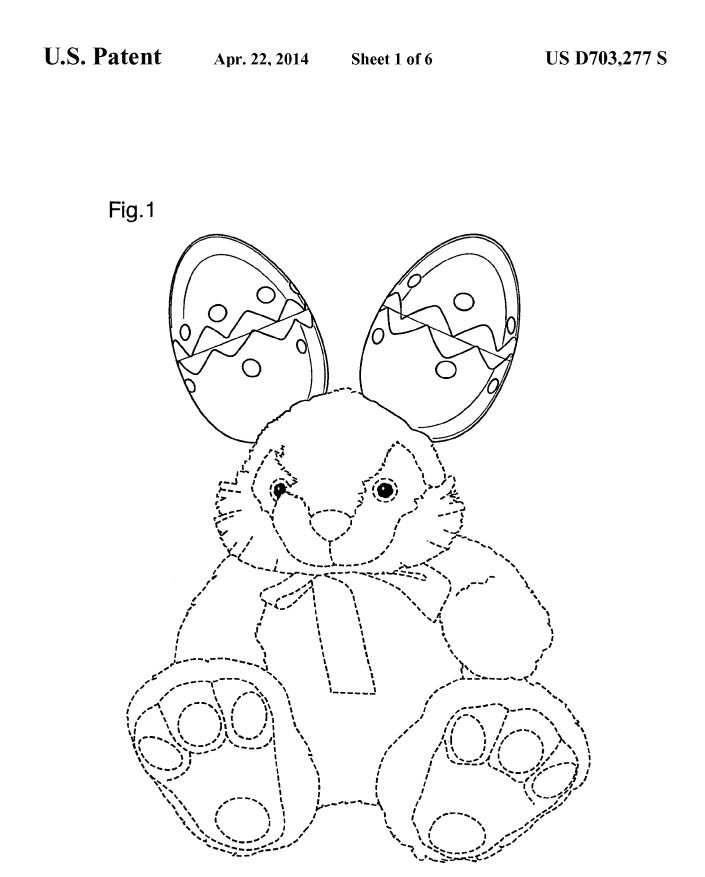
A man named Brad Scott was granted the patent in 2014 for his new design for "toy bunny Easter egg ears."
3. "Egg Decorating Kit" US Patent No. 9,4446,623
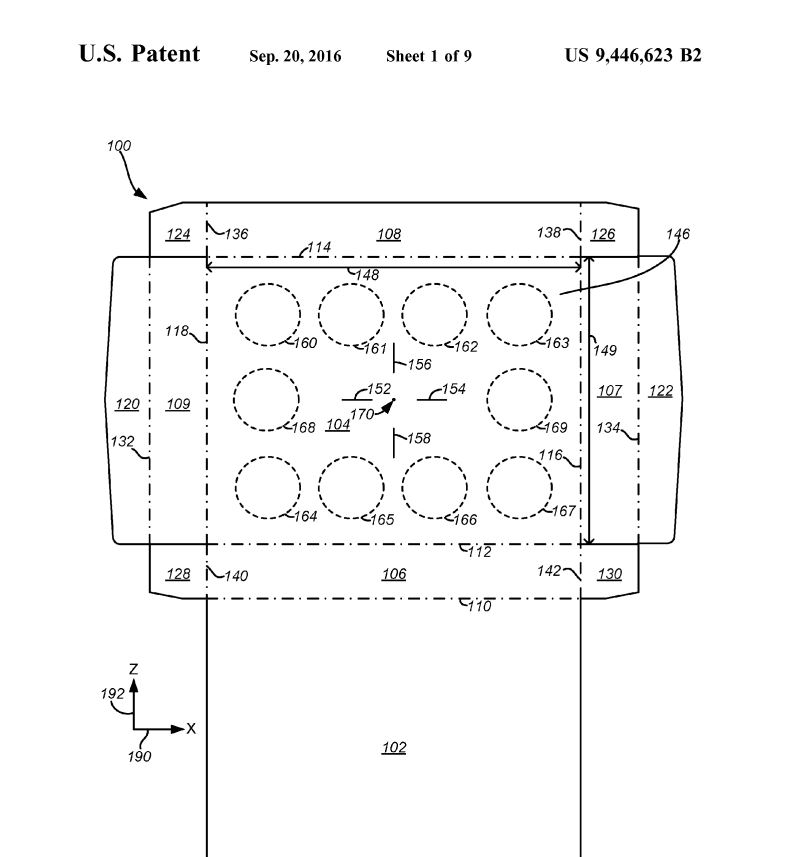
Allison Black patented the egg decorating kit in 2016. Black’s kit includes a variety of different decorating accessories. For many, decorating eggs is a family tradition.
Inventors have long been inspired by the Easter holiday, using their creativity to enhance our celebrations. May your Easter be filled with joy, laughter, and an appreciation for the egg-straordinary world of patents!
Suiter Swantz IP is a full-service intellectual property law firm providing client-centric patent, trademark, and copyright services. If you need assistance with an intellectual property matter and would like to speak with one of our attorneys, please contact us at info@suiter.com.
The United States Patent & Trademark Office Announces an Opportunity for Expedited Patent Filing
The USPTO Announces an Opportunity for Expedited Patent Filing
According to a USPTO press release, the agency has launched the First-Time Filer Expedited Examination Pilot Program. This program aims to assist inventors new to the patent world by expediting the examination process.
Under this program, first-time patent filers may request expedited examination of their application and expect a final decision within 12 months of filing. To qualify for the program, applicants must file their application as a non-provisional utility or plant application, with no more than four independent claims and 30 total claims.
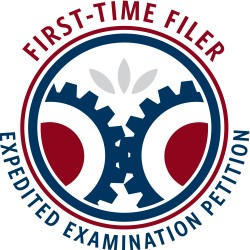
Upon acceptance of the request, the USPTO will place the application on an expedited track, prioritizing it over other applications. The agency commits to conducting an examination of the application within six months of acceptance and issuing a final decision within 12 months of filing.
The program will consider 1,000 petitions for expedited examination. Ultimately, the USPTO hopes this launch will encourage the development of more innovative ideas in the future.
You can apply for this program by filing a petition to make special for a qualifying patent application. More information here: https://www.uspto.gov/initiatives/first-time-filer-expedited-examination-program
To learn more about the program in general click here: https://www.uspto.gov/about-us/news-updates/usptos-council-inclusive-innovation-launches-new-initiative-expedite-patent
Suiter Swantz IP is a full-service intellectual property law firm providing client-centric patent, trademark, and copyright services. If you need assistance with an intellectual property matter and would like to speak with one of our attorneys, please contact us at info@suiter.com.
Can AI be an Inventor? Thaler v. Vidal
AI Patent Ownership: A Supreme Court Debate
In a landmark appeal, the US Supreme Court has been asked to decide whether an Artificial Intelligence (AI) can be an inventor on a patent. This recent development has caused controversy throughout the intellectual property (IP) community, as it could significantly impact the future of innovation and patent ownership rights. In this post, we will shed some light on the potential implications of this appeal and how it may blur the lines of patent ownership.
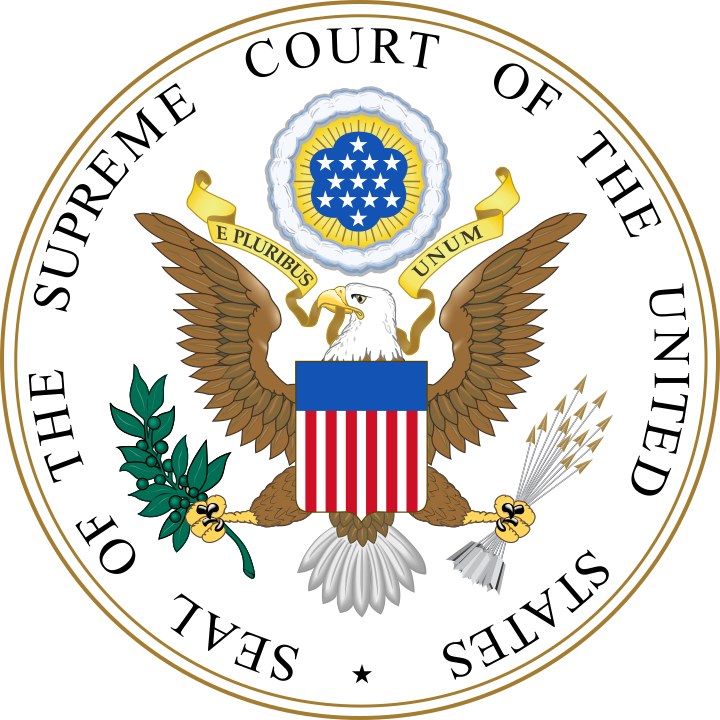
Background
The concept of AI inventors was sparked by the case of DABUS (Device for the Autonomous Bootstrapping of Unified Sentience), an AI developed by Dr. Stephen Thaler. Dr. Thaler filed patent applications in several countries, including the United States, claiming that DABUS had autonomously conceived two inventions. This move challenged the conventional idea of humans being inventors, as IP laws have always been centered around human creativity.
Previous Decisions
US patent law currently requires that the inventor must be an individual. However, Dr. Thaler and his supporters argue that this requirement is outdated in today's era of technology. The United States Patent and Trademark Office (USPTO) initially denied the applications, stating that AI systems are not capable of being the sole inventor. A similar outcome occurred in the United Kingdom and the European Patent Office, where the patent applications were denied on the same grounds.
The Appeal to the Supreme Court
Now, Dr. Thaler's legal team has appealed to the US Supreme Court to revisit the concept of AI inventors. The primary argument is that AI systems can contribute to inventive concepts in ways that are distinct from human inventors, therefore meriting recognition under patent law. Should the Supreme Court rule in favor of AI inventions, the landscape of patent law could be dramatically altered.
The Blurring of Ownership Rights
Inventions and ownership are linked in the world of patents. Under the current legal framework, the inventor is considered the initial owner of a patent. However, when it comes to AI, the question of ownership becomes much more complex. Should an AI system be deemed an inventor, it is unclear who would hold the initial patent rights. The possible contenders for ownership include:
- The AI system itself: This would raise unprecedented legal and ethical questions, as AI systems currently lack legal personhood and cannot hold property rights.
- The developer of the AI system: This would involve recognizing the developer as the inventor due to their role in creating the AI system responsible for the invention.
- The user of the AI system: This would consider the individual, or entity, who applied the AI system to solve a particular problem as the rightful owner.
Future Implications
The Supreme Court's decision on this issue could have far-reaching implications for the future of innovation and IP rights. If AI systems are recognized as inventors, new legal frameworks will need to be established to address the unique challenges of AI-generated inventions. This may include redefining patent ownership rights, establishing new criteria for inventors, and considering the ethical implications of AI-created inventions.
The question of whether AI can be a patent inventor is a complex issue. The Supreme Court's decision in this appeal will certainly shape the future of patent law and AI innovation. Suiter Swantz IP will continue to monitor these developments closely, ensuring our clients receive up-to-date advice and guidance on navigating the evolving IP landscape.
Suiter Swantz IP is a full-service intellectual property law firm providing client-centric patent, trademark, and copyright services. If you need assistance with an intellectual property matter and would like to speak with one of our attorneys, please contact us at info@suiter.com.
Trademark Trouble in the Golf World
Trademark Trouble in the Golf World.
Recently, LIV Golf, which is a professional golf tour financed by the Public Investment Fund, Saudi Arabia’s sovereign wealth fun, attempted to trademark a logo. The owner of a famous Miami nightclub pushed back due to an alleged resemblance of the LIV Golf logo to theirs. The nightclub claimed that the logos are “visually, phonetically and aurally similar and the goods/services share similarities.”
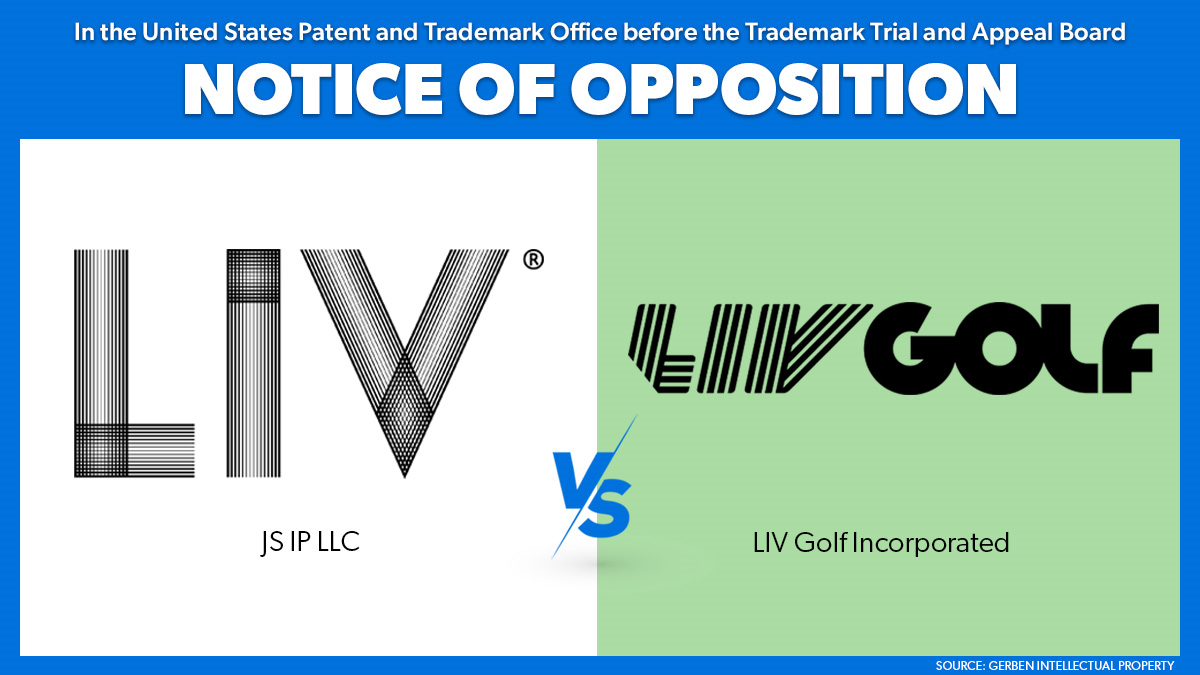
Both parties wanted to incorporate the Roman numeral 54 into their branding for unique reasons. The nightclub wanted to pay tribute to Studio 54, which is a Broadway theatre and old disco nightclub in Manhattan. LIV Golf wanted to incorporate the number as a reference to the number of holes played in each of their tournaments.
Despite approval by the United States Trademark Office, LIV nightclub filed an Opposition to the trademark application arguing that LIV Golf’s proposed mark is “confusingly similar” to the nightclub’s logo. While it remains to be seen who will prevail in the Opposition proceeding, one thing is for sure. The Professional Golfers' Association of America (PGA) Tour is not disappointed to see a hurdle in front of the competing LIV Golf’s branding efforts.
Suiter Swantz IP is a full-service intellectual property law firm providing client-centric patent, trademark, and copyright services. If you need assistance with an intellectual property matter and would like to speak with one of our attorneys, please contact us at info@suiter.com.
"The Madness" of Basketball Related IP
The Madness of Basketball Related IP.
As the NCAA Basketball tournament is about to begin, we wanted to share some basketball-themed intellectual property. As you’re rooting for your favorite team, take a look at these important pieces of basketball intellectual property!
Patents
Basket Ball: US Patent #1,718,305 (1929)

This patent for the "basket ball” was granted to G.L. Pierce in 1929 and versions used today still strongly resemble this early version.
Fun Fact: Until the late 1950’s, basketballs were actually dark brown! A college basketball coach, Tony Hinkle, thought the color was too dark for fans to see. So, with the help of the Spalding company, orange became the new color. Players used this version in the 1958 NCAA “Final Four” and the rest is history!
Basket Ball Shoes: US Patent #1,962.526 (1934)
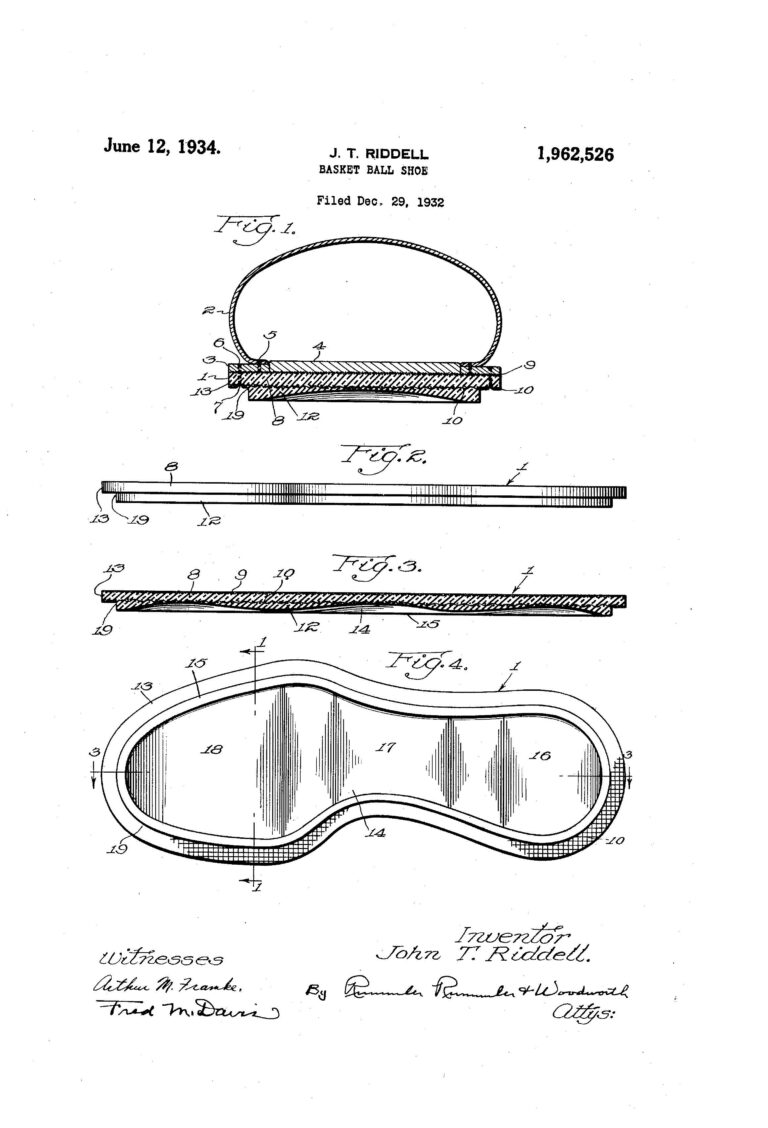
How would anyone play basketball without the right shoes? John T. Riddell obtained this patent in 1934 on a new design for “basket ball” shoes. While outdated and simple when compared to modern shoes, this unique design was meant to reduce fast wear and tear.
Basketball Goal: US Patent #2,053,635 (1936)
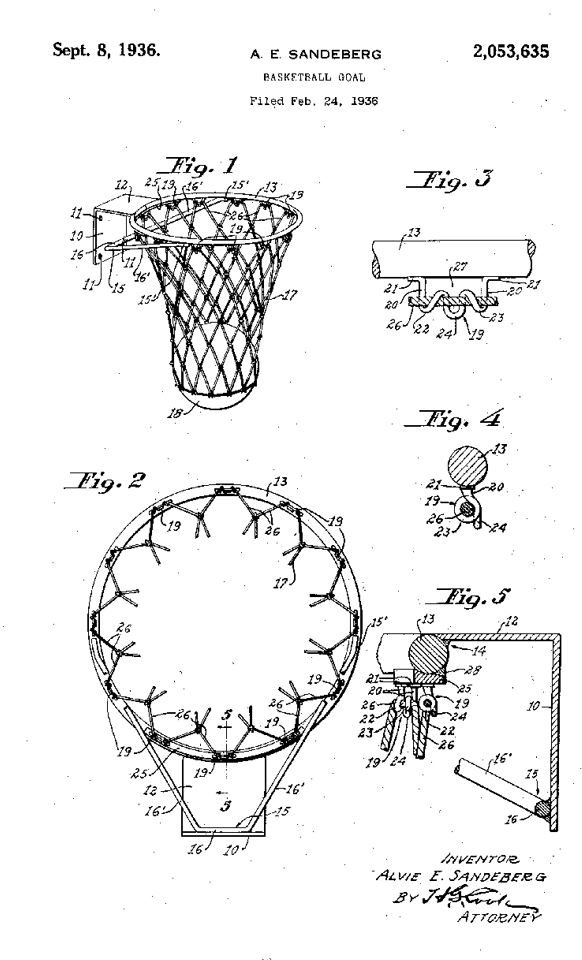
There were many early drafts for a basketball net. However, Alvie Sandberg patented one of the closest versions to the modern-day net in 1936. Considering this exact design is still used in basketball all over the world, I’d say, after many failed attempts, this invention has proved to be successful!
Trademarks
Here are also some famous NCAA-themed registered trademarks!
March Madness®
The trademark for “March Madness” is owned by the NCAA, the governing body for college athletics in the United States. The NCAA received their trademark in August of 2001.

NCAA Sweet Sixteen®
The NCAA received their official trademark registration for “NCAA Sweet Sixteen” in March of 2018. The NCAA vigorously defends its trademark and has taken legal action against those who use the phrase without permission. This includes companies that try to profit off of the popularity of the tournament by selling merchandise or offering promotions using the phrase “Sweet Sixteen.”
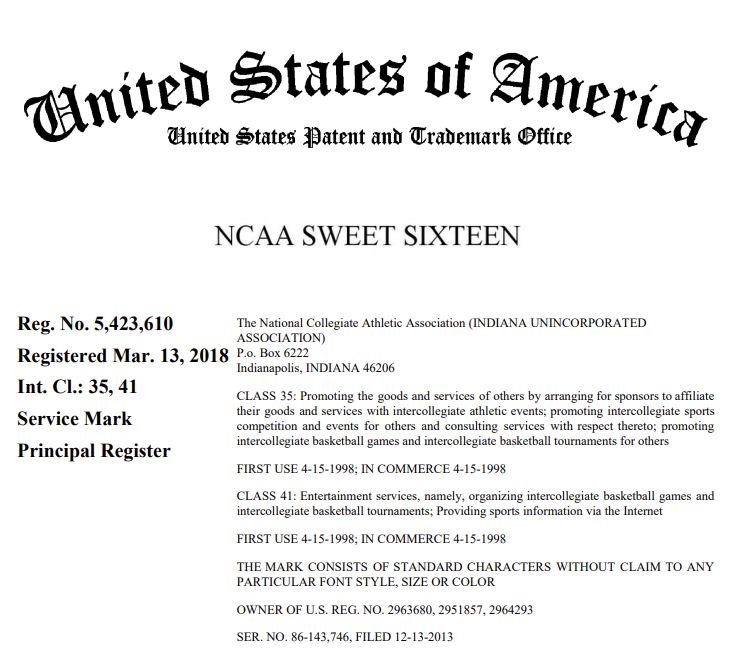
Elite Eight®
The NCAA received the official trademark for the phrase “Elite Eight” in January of 1997.
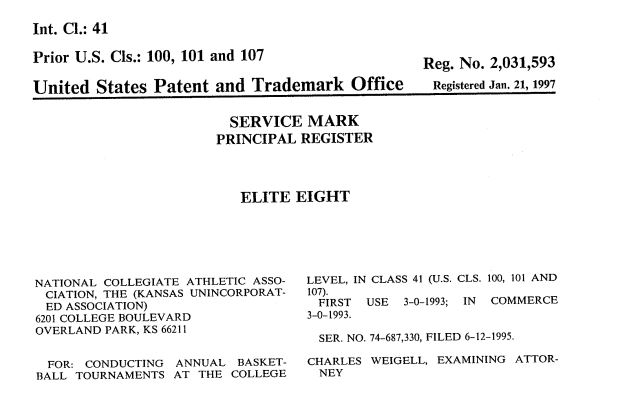
Final Four®
The NCAA received their registered trademark for the phrase “Final Four” in May of 1988.
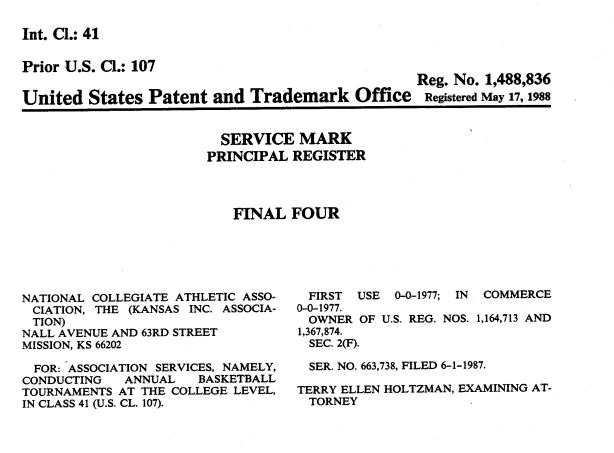
The Big Dance®
The phrase “The Big Dance” is a trademark that is owned by the NCAA. They received the registered trademark for this phrase in December of 2003. This trademark is important as it represents the final game in the March Madness season.
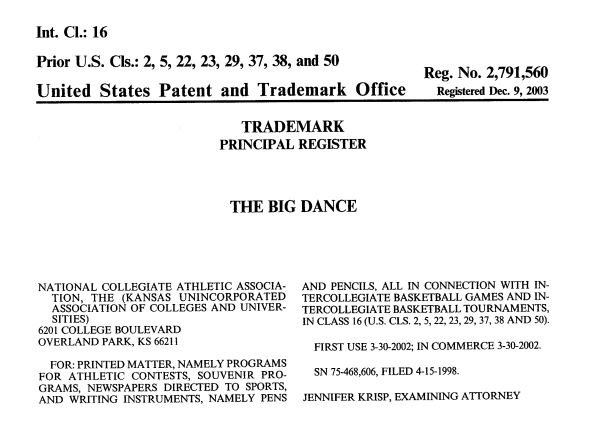
Suiter Swantz IP is a full-service intellectual property law firm providing client-centric patent, trademark, and copyright services. If you need assistance with an intellectual property matter and would like to speak with one of our attorneys, please contact us at info@suiter.com.
Suiter Swantz IP Welcomes Emma K. Schrick to the Firm
Emma K. Schrick Joins Suiter Swantz IP
We are excited to announce that Emma Schrick has joined our team as the Marketing Assistant here at Suiter Swantz IP. Emma graduated from the University of South Dakota in the Fall and started working for the firm at the beginning of 2023.
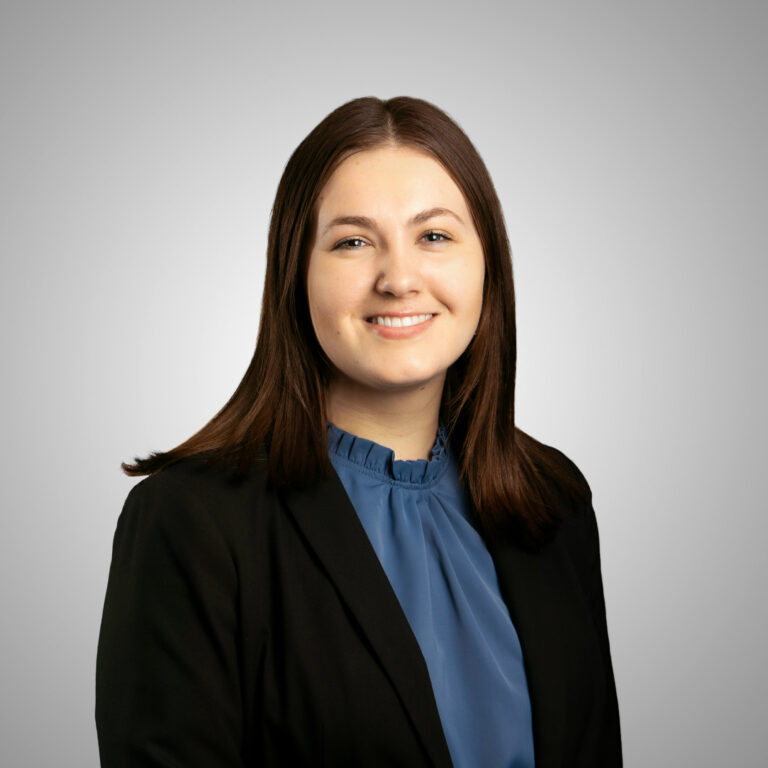
Emma received a B.A. in Communications and a minor in Social Media Marketing, and she is excited to bring her knowledge of marketing to the table in this position. Outside of the office, Emma enjoys spending time with her family and friends. She also enjoys lifting weights, singing, playing guitar, and traveling!
We are happy to have Emma with us here at Suiter Swantz IP and are thankful for the assets she brings to the table as an employee!
For more information on Emma, refer to our team page
Suiter Swantz IP is a full-service intellectual property law firm providing client-centric patent, trademark, and copyright services. If you need assistance with an intellectual property matter and would like to speak with one of our attorneys, please contact us at info@suiter.com.
New Intellectual Property Tool: Created by the United States Patent & Trademark Office
United States Patent & Trademark Office Creates New Intellectual Property Tool.
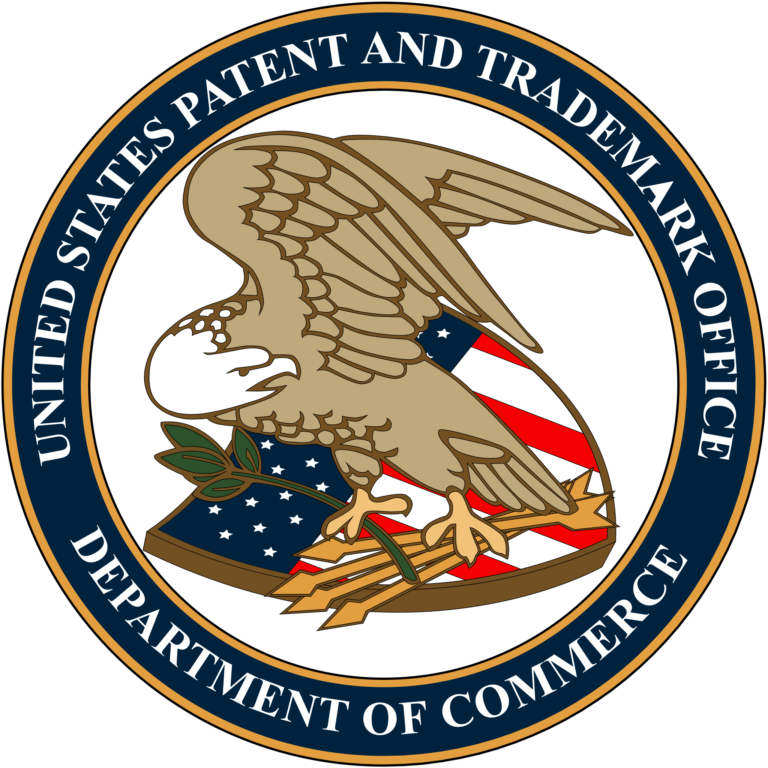
Do you need help identifying which type of protection fits your ideas? If so, the new Intellectual Property (IP) Identifier tool, created by the USPTO, is a great resource. Users can take advantage of both the Basic and Advanced modules to better understand what type of IP protection will suit them best. The tool uses questionnaires and other resources to help you better understand the specific types of IP. With one of the features being how to apply for protection. In addition, another module is in the works to help users further manage their IP assets.
Make sure to take advantage of this new tool! IP Identifier (uspto.gov)
Suiter Swantz IP is a full-service intellectual property law firm providing client-centric patent, trademark, and copyright services. If you need assistance with an intellectual property matter and would like to speak with one of our attorneys, please contact us at info@suiter.com.
Suiter Swantz IP Welcomes Miranda N. Conkling to the Firm
Miranda N. Conkling Joins Suiter Swantz IP
Miranda Conkling joined Suiter Swantz IP in 2023 as an Intellectual Property Paralegal, with 8 years of experience in patent prosecution and USPTO filing from start to finish. Miranda holds an Associate's Degree and has extensive knowledge in her field.
Outside of the office, Miranda enjoys spending time with her husband and children.
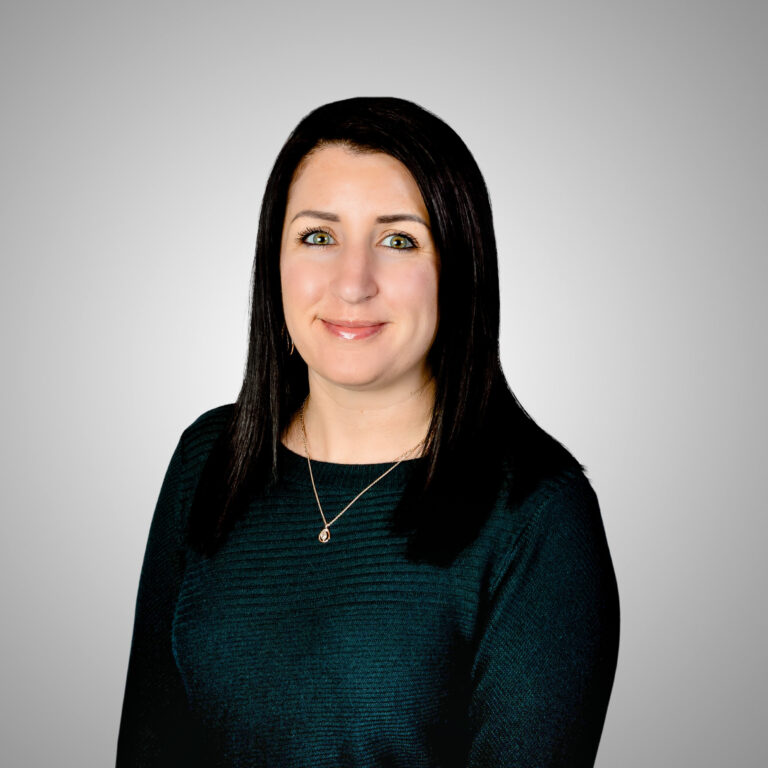
We are happy to have Miranda with us here at Suiter Swantz IP and appreciate the experience she brings to the firm!
For more information on Miranda, refer to our team page
Suiter Swantz IP is a full-service intellectual property law firm providing client-centric patent, trademark, and copyright services. If you need assistance with an intellectual property matter and would like to speak with one of our attorneys, please contact us at info@suiter.com.

